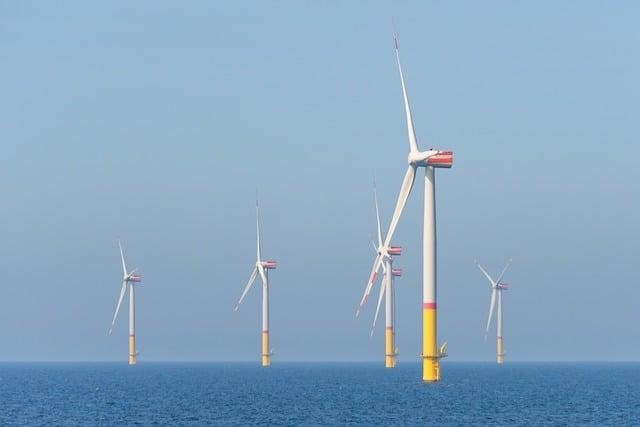As global energy demands continue to rise amid mounting concerns about climate change, the roles of China and the United States have never been more critical. In a world grappling with the urgent need to transition to cleaner energy sources, these two economic giants wield significant influence over the direction of the global energy landscape. NPR’s latest analysis delves into how the strategies, policies, and rivalries between China and the U.S. are shaping not only their own energy futures but also the trajectory of energy security and climate action around the world.
China’s Expanding Role in Global Energy Markets and Its Implications
China has drastically reshaped the landscape of global energy markets over the past decade, transitioning from a former net energy importer to an influential power player whose decisions reverberate worldwide. Bolstered by aggressive investments in both traditional fossil fuels and renewable energy projects, the nation now commands significant stakes in oil, natural gas, solar, and wind industries across Asia, Africa, and Latin America. This strategic expansion not only secures China’s energy supply chains but also alters geopolitical dynamics, challenging U.S. influence in key resource-rich regions.
Key factors driving China’s energy footprint include:
- Infrastructure development: Massive construction of pipelines, ports, and refineries enhances import capacity and distribution.
- Global partnerships: Long-term agreements with energy exporters solidify supply stability.
- Renewable dominance: Leading global manufacturing and deployment of clean energy technologies.
| Energy Sector | China’s Share of Global Capacity (2023) | Growth Rate (2018-2023) |
|---|---|---|
| Oil imports & infrastructure | 18% | 12% |
| Natural gas production | 10% | 25% |
| Solar power capacity | 35% | 40% |
| Wind energy installations | 28% | 30% |
This expansion has profound implications for global energy governance and market volatility. As China advances its foothold, it influences oil pricing, investment flows, and technological standards, compelling other nations to recalibrate policies and alliances. Furthermore, China’s rise prompts questions about sustainable growth and the balance between energy security and environmental commitments on an international scale. The complex interplay between Beijing’s ambitions and Washington’s strategic responses will significantly shape the future architecture of the world’s energy system.
Balancing Energy Security and Climate Goals in U.S. Policy
The U.S. energy policy landscape is at a pivotal crossroads, driven by the complex interplay between securing a reliable energy supply and advancing ambitious climate targets. Policymakers are grappling with how to maintain energy independence while transitioning to cleaner sources, a challenge compounded by global geopolitical tensions and market volatility. Recent legislation has emphasized diverse energy portfolios, as the administration seeks to minimize reliance on foreign imports without stalling carbon reduction commitments.
Key strategies under consideration include:
- Investment in renewable infrastructure to accelerate the adoption of solar, wind, and battery technologies.
- Modernization of the electric grid to improve resilience and integrate distributed energy resources.
- Support for advanced nuclear and carbon capture to provide low-carbon baseload power.
- Strategic reserves and diversification to buffer against supply disruptions and price shocks.
| Policy Approaches | Primary Goal | Expected Impact |
|---|---|---|
| Renewable Energy Credits | Encourage clean power adoption | Increased solar & wind capacity |
| Grid Modernization Grants | Enhance resilience & efficiency | Reduced outages, better integration |
| Carbon Capture Funding | Lower emissions from fossil fuels | Decrease in industrial COâ‚‚ output |
Collaborative Strategies for a Sustainable and Resilient Energy Future
Achieving a sustainable and resilient energy future requires more than isolated national efforts; it demands concerted collaboration among global powers, industry leaders, and local communities. China and the U.S., as the world’s largest energy consumers and producers, have unique roles to play in shaping policy frameworks that promote innovation, clean technology development, and infrastructure resilience. Their joint ventures in renewable energy projects, grid modernization, and carbon capture initiatives highlight the potential of shared technological advancements to drive down emissions while maintaining economic competitiveness.
Key strategies currently shaping this collaborative approach include:
- Establishment of international partnerships focused on research and development of low-carbon technologies.
- Shared investment in resilient energy grids capable of integrating variable renewable sources.
- Mutual commitments to carbon neutrality goals and transparent reporting mechanisms.
| Collaboration Area | China’s Role | U.S. Role | Global Impact |
|---|---|---|---|
| Renewable Energy R&D | Leading solar tech innovation | Advancing wind energy systems | Accelerated cost reduction worldwide |
| Grid Modernization | Smart grid pilot cities | Microgrid development | Enhanced energy access and reliability |
| Carbon Neutrality | Emissions trading programs | Federal clean energy standards | Improved accountability & transparency |
Insights and Conclusions
As China and the United States continue to navigate their complex roles in the global energy landscape, the world watches closely. Their policies and partnerships will not only shape their own economic futures but also determine the direction of global efforts to address climate change and energy security. In this high-stakes arena, cooperation and competition go hand in hand, underscoring the critical importance of sustainable solutions that transcend national borders. The energy future of the world may very well hinge on how these two superpowers engage with each other-and with the challenges ahead.




